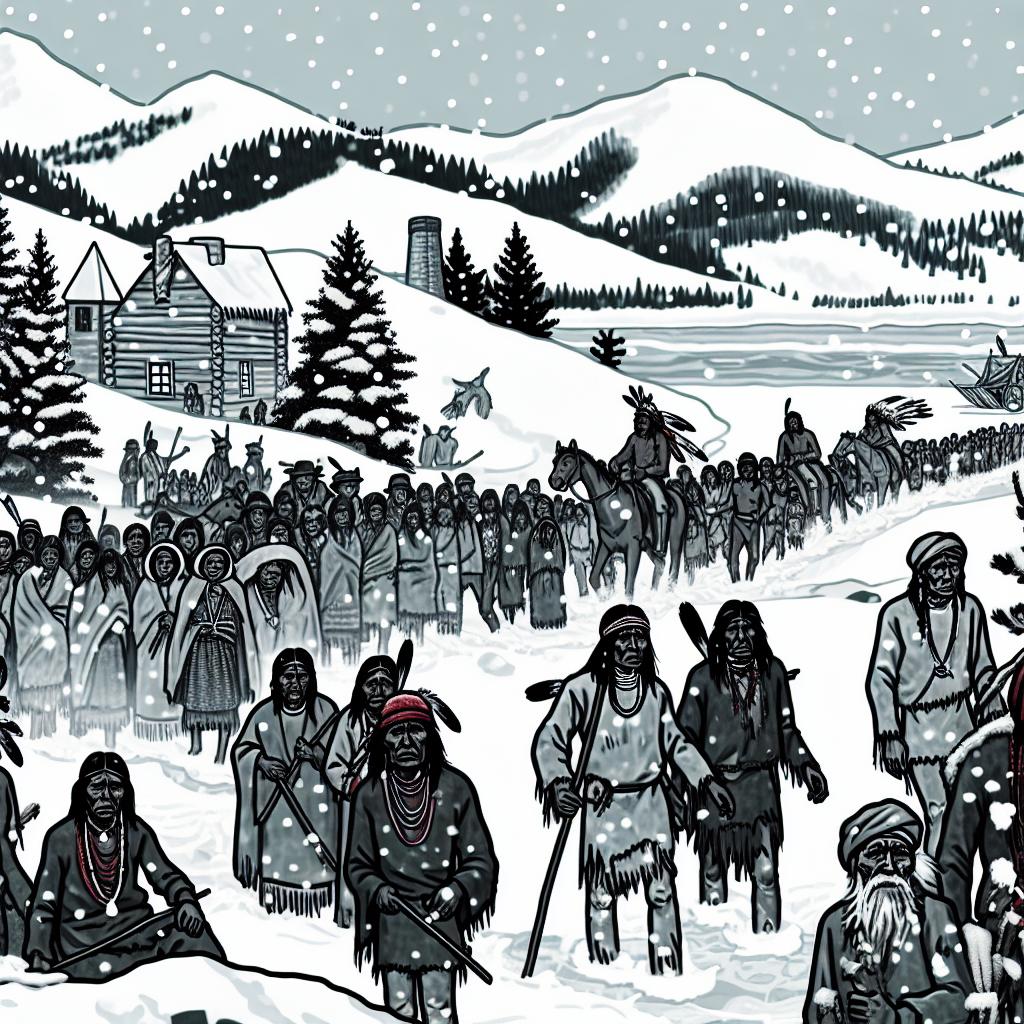The Historical Context of The Trail of Tears
The Trail of Tears is a significant and harrowing chapter in American history, encapsulating a series of mass relocations of Native American tribes from their original homelands in the Southeastern United States to designated regions west of the Mississippi River, known as Indian Territory. These events took place predominantly during the 1830s and were largely a result of the Indian Removal Act of 1830, which was enacted by President Andrew Jackson. Here, we delve into the historical context and consequences of these events, shedding light on the profound impact this forced migration had on the Native American nations involved.
The Indian Removal Act of 1830
The Indian Removal Act was legislation that authorized the United States government to pursue the negotiation of land-exchange treaties with Native American tribes. The core idea was to have these tribes surrender their established lands in the southeastern regions in exchange for lands further west. The proposal suggested that this exchange would be voluntary, presenting it as a mutually beneficial arrangement. However, the reality was a stark contrast, as the negotiations frequently involved intense pressure and often coercive tactics by the government. For further exploration, one can refer to the detailed records available at the National Archives (archives.gov).
Affected Tribes
Among the tribes significantly affected in this great upheaval were the “Five Civilized Tribes,” namely the Cherokee, Chickasaw, Choctaw, Creek, and Seminole. These tribes had developed complex societies with rich cultures and governance systems. The relocation not only severed their physical ties to ancestral lands but also disrupted their cultural and social frameworks. Each tribe faced the daunting task of maintaining their cultural identity and societal structures in unfamiliar and often less hospitable territories.
Details of the Relocation
The relocation process was fraught with immense challenges. The journeys were marked by grueling conditions: exposure to harsh weather, shortages of essential supplies, and outbreaks of disease were common. It is estimated that more than 100,000 Native Americans were forcibly relocated during this period, with the journey often taking its toll on the most vulnerable. Notably, the Cherokee relocation in 1838-1839, which caused thousands of deaths, became emblematic of the widespread suffering experienced by Native Americans during this period.
The Cherokee’s Journey
The Cherokee Nation’s response to their forced removal was notably organized, as they initially sought to protect their lands through legal avenues. This resulted in a landmark Supreme Court case, Worcester v. Georgia, which ruled in favor of the Cherokee, recognizing their sovereign rights to their lands. However, despite this legal victory, the ruling went unenforced, and ultimately, the Cherokee were subjected to the same forced removal as other tribes. Their plight on the Trail of Tears became an enduring symbol of the broader injustices faced by Native American tribes during this era.
Long-Term Impact
The immediate consequences of the Trail of Tears included significant loss of life and the rupture of tightly-knit communities. Beyond these immediate effects, the long-term impact was equally profound. Tribes were compelled to rebuild their societies from the ground up in new and often less fertile territories. Additionally, this period marked a pattern of broken treaties and unmet promises from the U.S. government, exacerbating a deep-seated mistrust and resentment. The Trail of Tears became emblematic of the larger narrative of disregard for Native American sovereignty and rights.
Modern Reflections
In contemporary discourse, the Trail of Tears is recognized as a crucial event reflecting the injustices faced by Native American populations. It stands as a testament to their resilience in the face of adversity. Today, there is a growing acknowledgment of the need for dialogue and efforts towards reconciliation, aimed at addressing historical grievances. Recognizing this history is vital for moving towards meaningful solutions that honor the past while forging a path forward. For those interested in ongoing initiatives that focus on honoring Native American histories and rights, the Native American Rights Fund (narf.org) is a valuable resource.
In conclusion, the Trail of Tears and the associated forced relocations are pivotal to understanding American history, the resilience of Native American communities, and the 19th-century dynamics of federal policy targeting indigenous populations. This period serves as a somber reminder of the rights that were trampled upon, but it also highlights the enduring strength of the Native American nations who endured and continue to thrive despite these historic injustices. As we reflect on these events, it is imperative to learn from the past to avoid repeating similar mistakes and to engage in efforts that promote justice and reconciliation.

